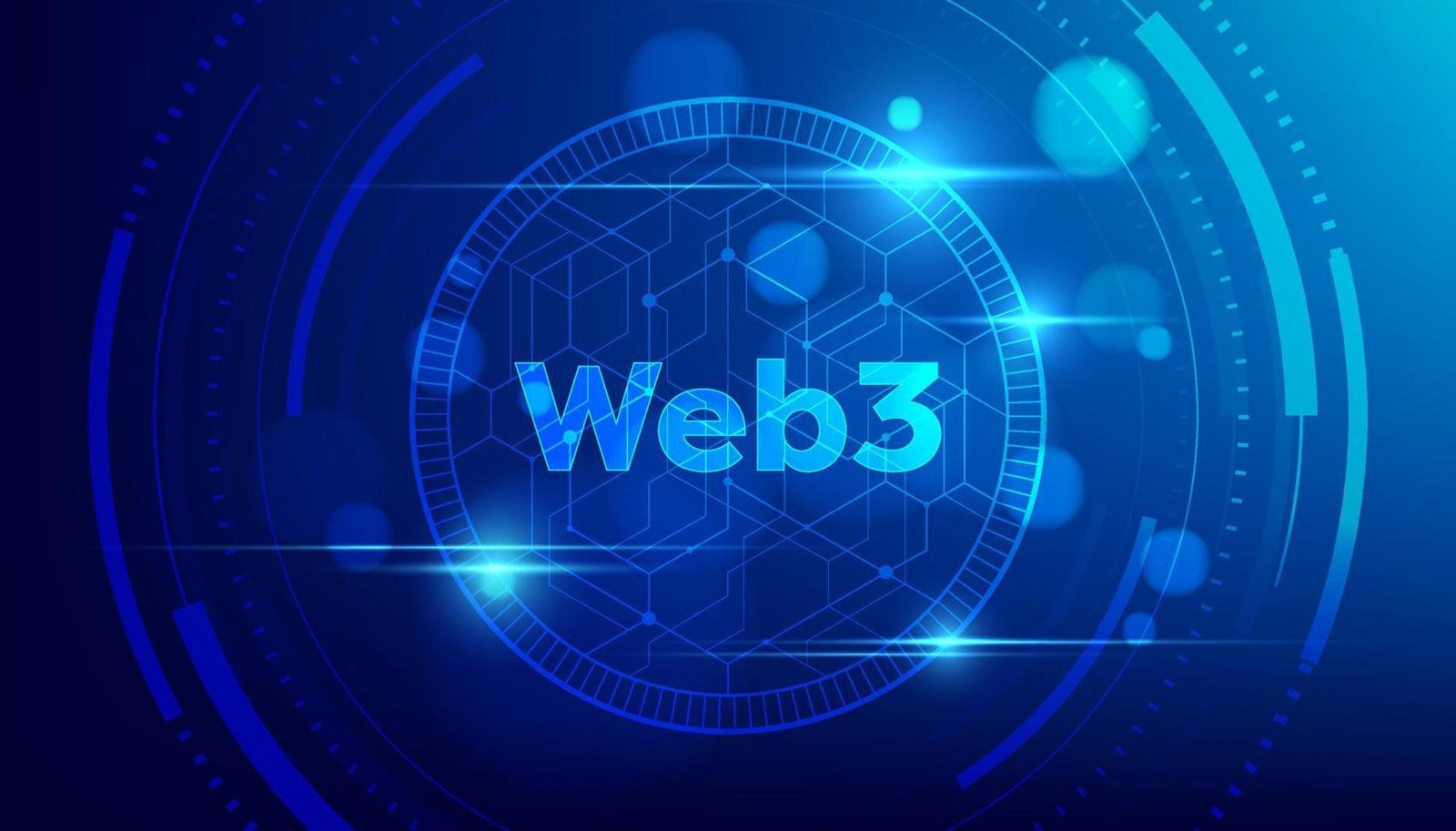Introduction
The internet has gone through dramatic transformations since its inception. From the static, read-only pages of Web1 to the interactive and platform-dominated era of Web2, each phase has reshaped how people interact, communicate, and transact online. Now, a new paradigm is emerging: Web3.
Often described as the “decentralized internet,” Web3 is a term that encompasses a broad set of technologies, ideologies, and innovations aiming to put users back in control of their data, identity, and digital interactions. But what is Web3 really? Is it just a blockchain buzzword or a foundational shift in how the internet operates?
In this article, we’ll break down what Web3 is, how it differs from previous web iterations, the technologies driving it, and the real-world impact it’s already beginning to have.
A Brief History: From Web1 to Web3
To understand Web3, it’s helpful to look at the evolution of the internet:
Web1: The Static Web (1990s–early 2000s)
Web1 refers to the early days of the internet when websites were mostly static and read-only. Users could consume content, but interaction was minimal. It was decentralized in the sense that many small websites existed, but it lacked dynamic content and user-generated input.
Web2: The Social & Platform Web (2004–present)
Web2 introduced dynamic content, interactivity, and user-generated platforms. Social media, e-commerce, and cloud services exploded. Platforms like Facebook, Google, and Amazon became dominant. While this made the web more useful and accessible, it also led to centralized control of data, attention, and revenue.
Web3: The Decentralized Web (Emerging)
Web3 aims to decentralize control using blockchain technologies, giving users ownership over their data, digital assets, and identities. It moves away from the platform-centric internet by using peer-to-peer networks, smart contracts, and token-based governance.
What is Web3?
At its core, Web3 is a vision for a new version of the internet built on decentralized protocols. Instead of relying on centralized entities (like Google or Meta) to store data and manage services, Web3 distributes power and data across users and systems.
Web3 is:
- Decentralized: No single entity controls the network.
- Permissionless: Anyone can participate without approval.
- Trustless: Interactions are governed by cryptographic algorithms, not middlemen.
- Native to blockchain: Transactions and assets exist on-chain.
- Token-based: Incentives are aligned via cryptocurrencies or tokens.
In essence, Web3 tries to build a user-centric internet — one where value accrues to participants, not intermediaries.
The Technologies Behind Web3
1. Blockchain
The backbone of Web3 is blockchain technology. A blockchain is a decentralized ledger that records transactions in a secure and transparent manner. Ethereum is the most commonly used blockchain for Web3 applications due to its support for smart contracts.
2. Smart Contracts
These are self-executing code snippets that run on blockchains. They enable trustless agreements and are the foundation for decentralized apps (dApps).
3. Cryptographic Tokens
Web3 applications often use tokens to represent value or access. These could be:
- Cryptocurrencies (e.g., Ether, Bitcoin)
- Utility Tokens (for governance, access rights)
- Non-Fungible Tokens (NFTs) (for unique digital assets)
4. Decentralized Storage
Instead of hosting data on centralized servers, Web3 uses systems like IPFS (InterPlanetary File System) or Arweave to store data across distributed nodes.
5. DAOs (Decentralized Autonomous Organizations)
These are blockchain-based organizations governed by smart contracts and token holders, rather than centralized leadership. DAOs are a core component of Web3’s promise of decentralized governance.
6. Digital Wallets
Web3 users manage identities and assets using crypto wallets (e.g., MetaMask, Phantom). These wallets act as a gateway to interact with dApps and verify identity on-chain.
How Web3 Differs from Web2
| Feature | Web2 | Web3 |
| Data Ownership | Controlled by platforms | Controlled by users |
| Identity | Centralized (emails, passwords) | Decentralized (wallet addresses) |
| Monetization | Ad-based, platform-centric | Token-based, user-centric |
| Control | Few large corporations | Community governance via DAOs |
| Censorship | Possible by platforms | Censorship-resistant due to decentralization |
| Security | Relies on platforms | Built on cryptographic proofs |
Real-World Use Cases of Web3

1. Decentralized Finance (DeFi)
DeFi platforms like Uniswap, Aave, and Compound allow users to lend, borrow, and trade crypto assets without intermediaries. The entire financial infrastructure is rebuilt on smart contracts.
2. NFTs and Digital Ownership
NFTs let users own unique digital items — from art to music to real estate. Platforms like OpenSea and Zora allow creators to monetize content without middlemen.
3. Decentralized Social Media
Web3-based platforms such as Lens Protocol and Farcaster allow users to own their content, followers, and identities, unlike traditional platforms that retain full control.
4. Play-to-Earn Gaming
Games like Axie Infinity and Illuvium allow players to earn tokens or NFTs, providing real economic incentives and ownership.
5. Supply Chain Transparency
Blockchain enables verifiable tracking of goods and materials in industries like agriculture, pharmaceuticals, and fashion, enhancing trust and reducing fraud.
Web3 and Privacy
One of Web3’s strongest promises is enhanced privacy. Users no longer have to rely on opaque data policies. Instead, cryptographic tools allow individuals to control what data they share and with whom.
Technologies like Zero-Knowledge Proofs (ZKPs) enable users to prove something (e.g., age, citizenship) without revealing actual data. This can revolutionize compliance, voting systems, and private transactions.
Challenges and Criticisms
1. User Experience (UX)
Interacting with Web3 requires some technical knowledge. Wallets, seed phrases, and gas fees can confuse users unfamiliar with blockchain.
2. Scalability
Blockchains like Ethereum have faced congestion and high fees. Although Layer 2 solutions and other blockchains (e.g., Solana, Polygon) are emerging, scalability remains a key issue.
3. Regulatory Uncertainty
Governments worldwide are still grappling with how to regulate Web3 assets and platforms. Questions around securities laws, taxes, and consumer protections are unresolved.
4. Centralization Risks
Despite its ideals, Web3 is not immune to centralization. For example, many dApps rely on a few infrastructure providers (e.g., Infura). Token distributions in some DAOs are also heavily skewed.
5. Security
Smart contract vulnerabilities have led to multi-million dollar hacks. Unlike Web2, there’s often no recourse for users who lose funds due to bugs or scams.
Major Web3 Projects to Watch
- Ethereum: The leading smart contract platform.
- Polkadot: Enables interoperability between blockchains.
- Chainlink: Provides real-world data to smart contracts (oracles).
- Arweave: A protocol for permanent decentralized storage.
- Helium: Decentralized wireless network infrastructure.
- Filecoin: Another major decentralized storage solution.
These projects are at the heart of Web3’s infrastructure and development, and they each solve a specific part of the decentralized internet puzzle.
Is Web3 the Future?
Web3 is still in its early stages, but the momentum is undeniable. Venture capital funding in Web3 startups has surged over the past few years, and developers are increasingly turning toward open protocols and decentralized applications.
However, whether Web3 becomes mainstream depends on:
- Improved scalability and UX
- Wider regulatory clarity
- Public trust and education
- Corporate and institutional adoption
Some skeptics argue that Web3 is just a rebranding of blockchain hype. Others believe it is a necessary evolution of the internet, one that returns agency to users.
Conclusion
So, what is Web3? It’s not just a buzzword — it’s a fundamentally new vision for how we interact, transact, and build online. Web3 seeks to shift the internet away from centralized control and toward a trustless, transparent, and user-owned ecosystem.
While it’s still a work in progress with numerous hurdles to overcome, Web3 represents a bold attempt to rethink the internet from the ground up. It has already begun reshaping finance, gaming, social networks, and digital identity. The coming years will determine whether it fulfills its promise — or becomes another passing trend in tech history.
For those curious, cautious, or eager to build, understanding Web3 is no longer optional — it’s essential
For more updates on blockchain, AI, decentralized technologies, and emerging trends, explore the latest at TechThrilled.
